When Jordan Peele won Best Original Screenplay for Get Out at the 90th Annual Academy Awards, his Oscar was well-deserved.
To be fair, this year’s competition was high. Of the 5 nominated scripts, 4 (Get Out, Lady Bird, The Shape of Water, and Three Billboards Outside Ebbing, Missouri) were written by their directors. The fifth — The Big Sick — was co-written by its star, Kumail Nanjiani. In each case, the story being told was deeply personal to the authors, so each of them did double duty to bring their words to life onscreen.
And while I love the nuances that make Lady Bird so special, what most impressed me about Get Out is the brisk efficiency of its storytelling.
But that was my opinion while I was watching the film. Then I read the script, and I was impressed by something else, too: Jordan Peele made several changes from script to screen that actually improved the story.
First, let’s look at what works so well in the screenplay for Get Out. Then we’ll see how Peele’s changes made his finished film even better.
NOTE: Spoilers for GET OUT ahead!
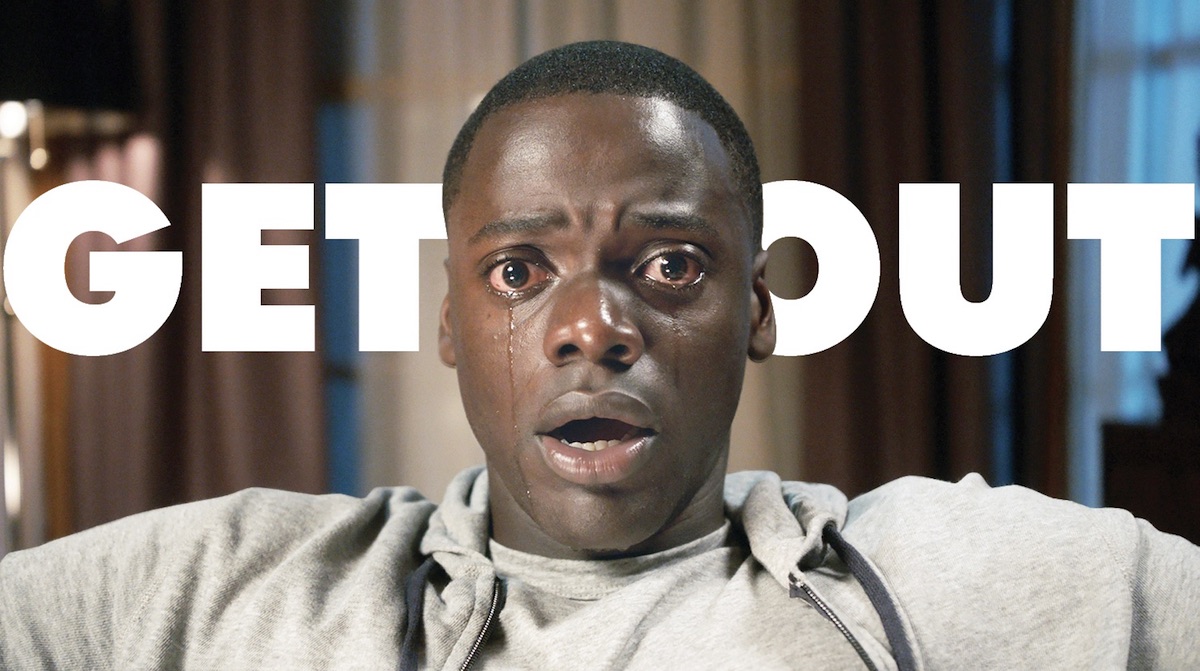
Theme and Genre Merge in the First Scene
Although Get Out is the story of Chris (Daniel Kaluuya) meeting the family of his girlfriend Rose (Allison Williams), the story actually begins by establishing its theme via another character.
In the original script, we open on a family discussing their upcoming trip to Disney World — probably the most family-friendly image you could start with. But already there’s a hint that something’s not quite right.
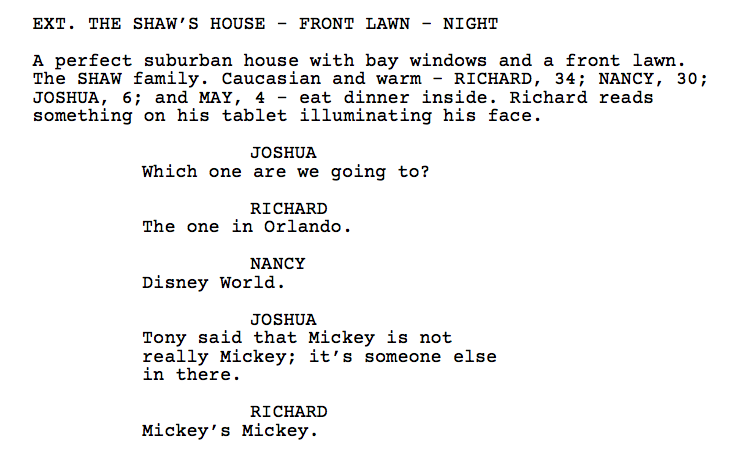
From the very first dialogue, we begin unraveling the film’s theme. The son questions if who we appear to be on the surface is different from who we really are underneath. But his father insists that surface appearances are what matter. In just one simple exchange, we establish the film’s thematic conflict.
We then shift to Andre, a young black man jogging past the Shaw family’s home. He stands out because this is clearly a white suburb. The father notices Andre outside and tenses up. Here we have a visual depiction of the thematic conflict now made personal: the father is unsure of Andre’s intentions, based on his presumptions of Andre’s appearance.
This scene also plays on audience perceptions.
By first introducing us to a white middle-class family, we’re naturally expected to empathize with them because we haven’t met any other characters to compare them to yet. And if Andre had jogged past the window out of nowhere, our first instinct might be to wonder what he’s up to — to see him as a possible external threat to the Shaws’ pleasant evening.
But the script makes a crucial choice: it cuts away from the Shaws and introduces Andre to us as an equally relatable character.
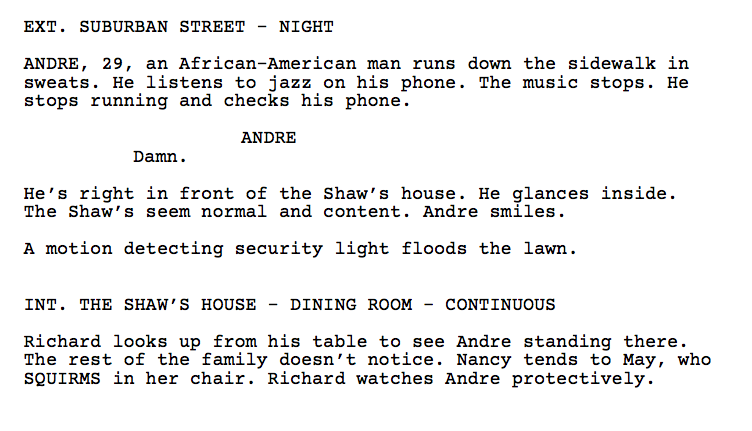
Because we have more context about Andre than the Shaw family does — he’s simply out for a jog, he’s listening to jazz, and his playlist just ended mid-run, which is annoying — we’re invited to empathize with Andre separately from the Shaw family.
Thus, when Mr. Shaw looks uneasily at Andre through his window, our sympathies shift — we now feel the potential threat to both the Shaws and Andre from a possible misunderstanding. Here, Peele is making our own biases apparent to us.
But then things take a turn.
A passing car begins stalking Andre, which eventually leads to a confrontation… which ends with Andre getting shot with a tranquilizer dart and stuffed into the driver’s trunk.
This entire scene happens outside the Shaw family’s home, but they remain oblivious — an allegory to white America’s willful ignorance when it comes to the plight of Black America.
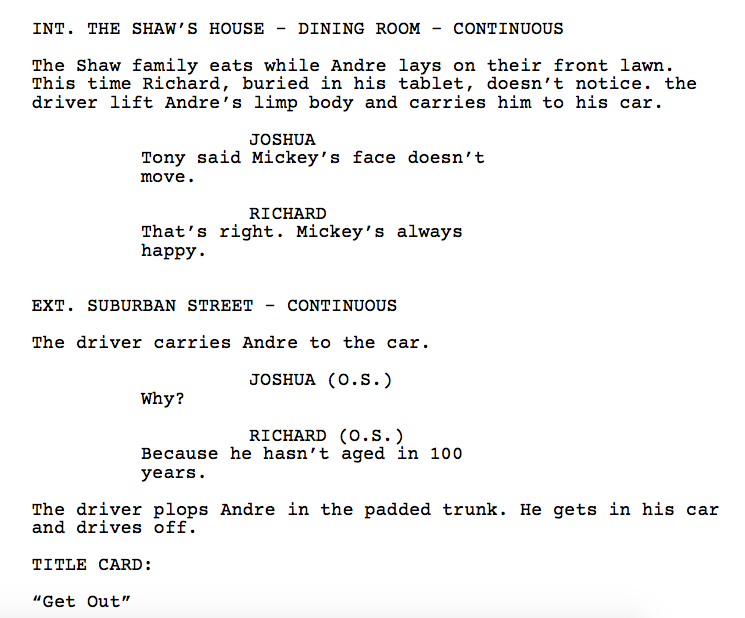
Peele wraps this scene up with dialogue that buttons the conversation between father and son while simultaneously foreshadowing the plot and underlining the theme — all while a horror scene is playing out on their front lawn.
Honestly, this scene alone is worth the Best Screenplay Oscar.
Which is why it’s so striking that Peele cut half of it from his finished film.
What’s Different in the Movie?
Instead of opening on the Shaw family, the filmed version of Get Out opens on Andre (Lakeith Stanfield). He’s not jogging, and he’s not established as having recently moved to the neighborhood, as he is in the script. Instead, he’s lost, as we learn by hearing only his half of a cell phone conversation.
Where is the Shaw family? Gone. They don’t exist in the film.
Why does this change to the scene work even better than the screenplay does? Three reasons:
By introducing to Andre as the first character we meet, our sympathies are immediately on his side by default. Peele wisely streamlines the narrative here by putting us in Andre’s shoes and forcing us to feel his apprehension from the very first frame. This change effectively puts the entire audience into Andre’s POV — and, by extension, into the POV of Black America — for the rest of the movie.
By eliminating the Shaw family’s dialogue-as-theme, we’re spared from having to process too much information all at once at the beginning of the movie, or from forming an emotional attachment to characters we won’t see again. Peele knows he can address these same issues when Chris meets Rose’s family, and it’ll mean more then because those characters will be directly interacting, rather than passively overlapping.
And without having to jump between dueling POVs, the overall impact of the suspense, shock, and “what the fuck just happened”-ness of this scene is amplified. It’s a classic example of the “less is more” maxim: when we have less to focus on, what we focus on matters that much more.
Descriptive Character Introductions
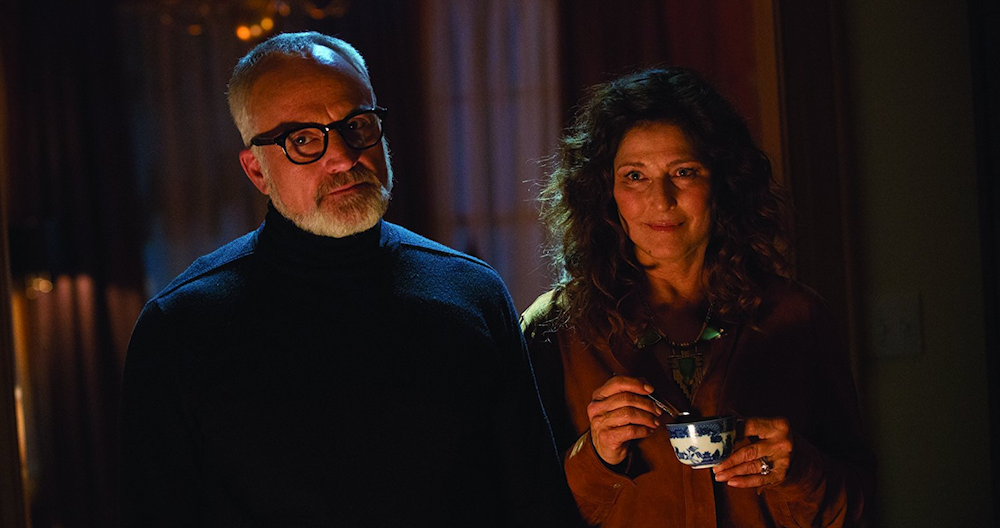
On their Comedy Central show Key & Peele, creators Keegan-Michael Key and Jordan Peele had to quickly establish their characters through visual cues and narrative shorthand. That experience has served Peele well here, as his character intros in the Get Out screenplay are fantastically evocative with just a few words.
The best of these is his on-page introduction of Dean Armitage, played by Bradley Whiftord.

Dean is referred to as “a bear hug of a man,” which is a casting director’s dream prompt. It’s also a wonderful misdirection. Dean is introduced as the kind of guy you’d want to know, which makes who he actually is so unnerving.
Peele also uses his on-page intros to give his actors a glimpse into their character’s defining traits. For example, Dean is described as having “an endearing cockiness and a bad case of dad humor. He is the kind of guy who pronounces garbage ‘gar-bahge.'” While screenwriters are often cautioned to avoid writing anything the audience won’t see, these kinds of personality cues do give an actor the clues they need to embody those character traits visually.
Missy Armitage (Catherine Keener) has a more understated introduction, but it’s just as effective. “A beautiful beacon of intellectual patience” is crucial: by highlighting her patience, Peele indicates that Missy is the kind of woman who’s playing the long game.
But Peele’s best flourish here may be the easiest to overlook: he introduces us to Dean first, “And…” then to Missy. By adding that little “And…”, he not only gives his actors and cinematographer a clue of how to stage the scene — focus on Dean first, then draw attention to Missy — but he also signals that Missy is the one you might overlook at first, but she’s really the one running the show.
Thematic Clues Hidden in Dialogue
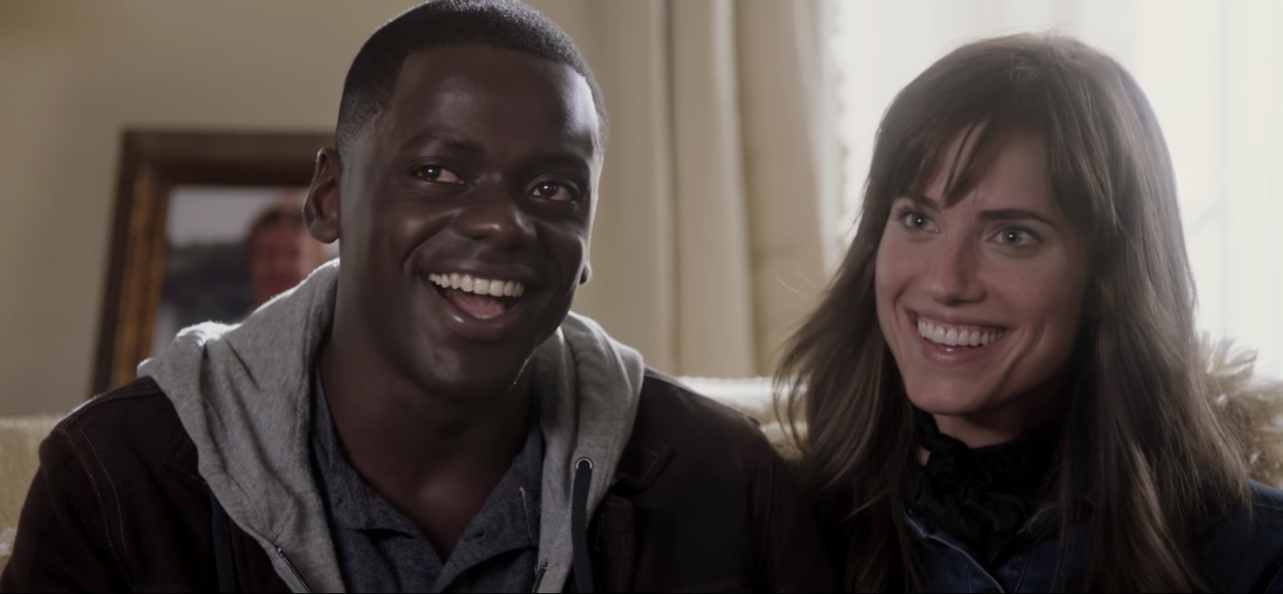
Some of Peele’s best writing comes during “the tour,” when Dean shows Chris around the house.

Unfortunately, the payoff from setups like these are somewhat dulled by the film’s marketing campaign. To attract attention to a film like Get Out, the Blumhouse production company had to very clearly depict the premise in the trailer.
But once you know the film is about malevolent white people who do something bad to black people, it makes the subtleties in some of these dialogue exchanges seem more overt than they would if you went into the film with zero pre-awareness of its theme.
Nonetheless, Peele still manages some great misdirection here.
For example, consider the exchange when Dean recounts the anecdote of his father failing to make it to the 1936 Olympics because he finished behind Jesse Owens in the qualifying round.

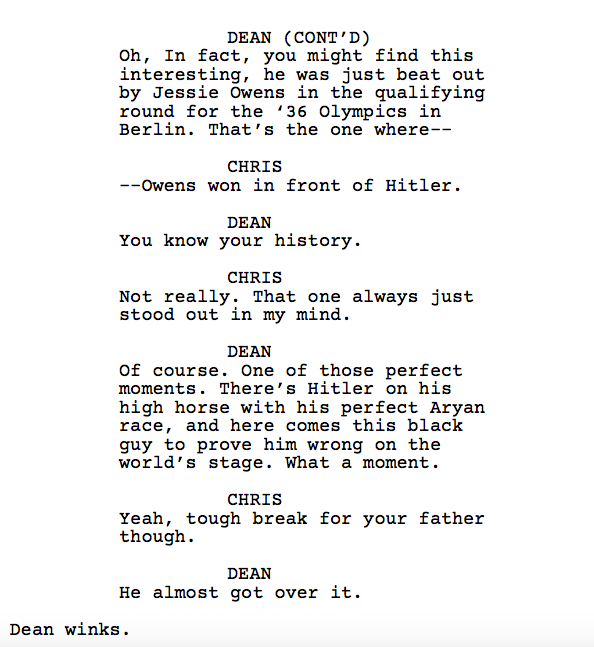
As he tells the story, Dean plays up the heroism in Owens’s moment as a means to win Chris’s (and the audience’s) trust: hey, look, we’re all on the same side. But the kicker is in that last moment: “Tough break for your father though.” / “He almost got over it.” Dean winks, and Chris (and we) think we’re privy to an inside joke that brings us closer to the family. But that comment really establishes Dean’s father’s motivation for the entire experiment that fuels the story’s underlying plot.
And what gets lost as we digest the sociopolitical foreshadowing of this scene?
The fact that Dean’s father was an Olympic-level sprinter.
If you’ve seen the film, you know why this matters in the film’s final sequence… but you’ve probably forgotten that it was set up in this seemingly incidental conversation.
In a film as efficient as Get Out, no line of dialogue is ever just about one thing.
What Else Is Different from Script to Screen?
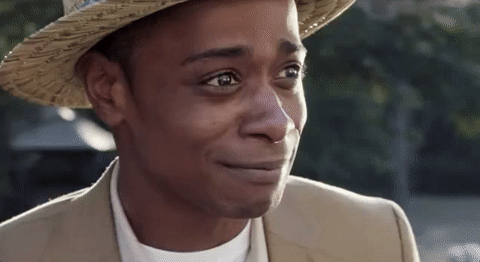
Many of the changes Peele made between writing Get Out and filming it are minor, but they still have a big impact on how the story looks and feels.
For example, in the famous “backyard running scene,” the script says Walter runs right past Chris. But onscreen, Walter (Marcus Henderson) runs directly at Chris and then veers away at the last second. This change makes the moment far scarier — Chris is in direct danger, rather than simply observing something bizarre — but it’s likely a change that Peele would have only been able to make once he was on set and saw the physicality of the moment in motion.
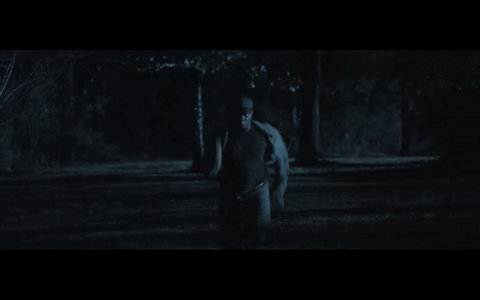
Likewise, when the family’s maid, Georgina (Betty Gabriel) is insisting that everything in the house is fine, it feels functional on the page. But when he was writing it, there’s no way Peele could have known that Gabriel would be able to do this onscreen.
And when Chris meets Andre (now known as “Logan”) at the movie’s midpoint, the script establishes that he’s become the partner of an elderly gay man. But in the film, Logan is the boy toy of an older woman.
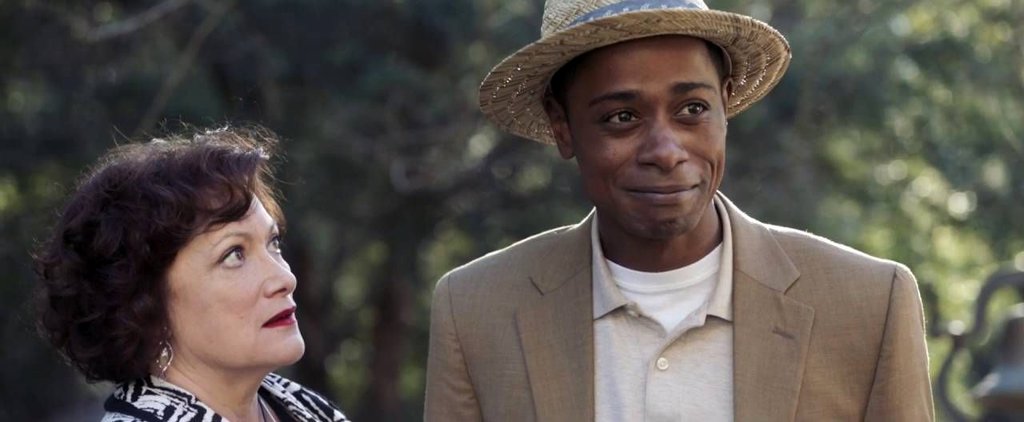
Why make this change? I suspect it’s because Peele didn’t want to potentially complicate the central theme. “Racist body snatchers” is a clear concept; “racist body snatchers who may also be rewiring their captives to become homosexual” adds a whole new element that could be confusing or distracting.
But while most of Get Out‘s script-to-screen changes are minor, there are three more big changes that actually change how the movie works.
First, Chris was originally written as wanting to leave the Armitage home after the tense dinner scene with Rose’s brother Jeremy. But as Peele explained, having Rose talk Chris into staying at that point would have turned audiences against her, so he rewrote that scene to make Rose seem like the one who was upset, which forces Chris to talk her down. By making this change, we in the audience can’t help but feel like we’re watching Chris talk himself into his own nightmare, which further amplifies the tension.
Second, in the original script, it’s Jeremy who pursues Chris at the end, not Rose. But by keeping Rose active in the story until the very end, the stakes are raised because Chris is literally at odds with the woman he loves, rather than her brother whom he just met.
But the biggest change of all is the ending.
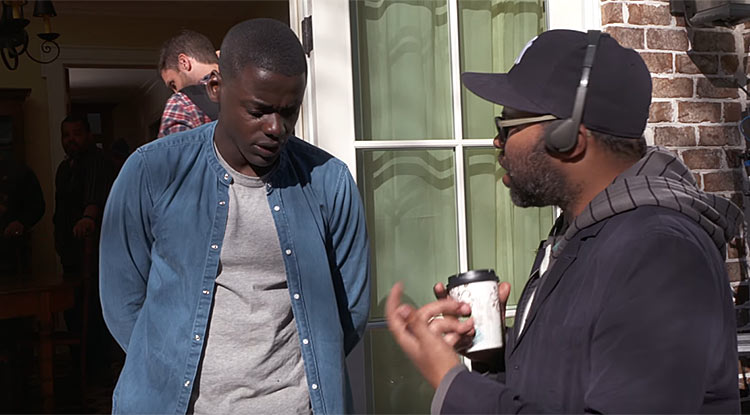
Daniel Kaluuya as Chris and writer-director Jordan Peele on the set of Get Out
In the original script, Chris winds up in jail. But, perhaps sensing that this ending would be too bleak for audiences, Peele also filmed an alternate ending… and that ending was ultimately used in the theatrical release.
In other words, rather than giving us the ending we expected, Peele chose to give us the ending we needed.
Given Get Out‘s massive box office and awards season success, the most impressive aspect of Jordan Peele’s debut film may actually be the way he took his Oscar-winning Best Original Screenplay… and made it even better.
If You Like This Post
… then you may also like these:
- The story problems in Aaron Sorkin’s Molly’s Game
- Where Blade Runner 2049 went wrong
- Screenwriting tips from the ALIENS screenplay
- How Dune (2021) got its worldbuilding and exposition right
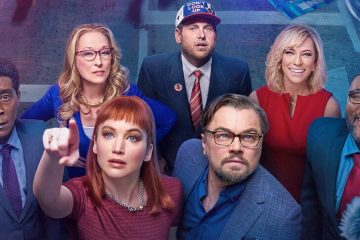

3 Comments
Violamay · February 14, 2021 at 8:16 pm
Thanks for writing this, it’s really interesting to learn how Peele fine tuned the script, to make a more cohesive end product. Walter running always stuck in my mind as a favourite scene, I completely missed the Olympic sprinter set up, Now it makes sense lol.
30 Best Screenplays of the 21st Century to Learn From · October 4, 2023 at 12:44 pm
[…] And she, being a white woman also hasn’t told her family about him yet. It’s a fantastic screenplay by Jordan Peele. You can also read the script breakdown here. […]
30 Best Screenplays of the 21st Century to Learn From · July 24, 2020 at 6:38 am
[…] Get Out is a film about love, hate, betrayal and racism in the modern world. The theme of the script is set from the beginning itself when the main character who is black has doubts about his girlfriend’s family. And she being a white woman also hasn’t told her family about him yet. A fantastic screenplay by Jordan Peele. You can also read the script breakdown here. […]